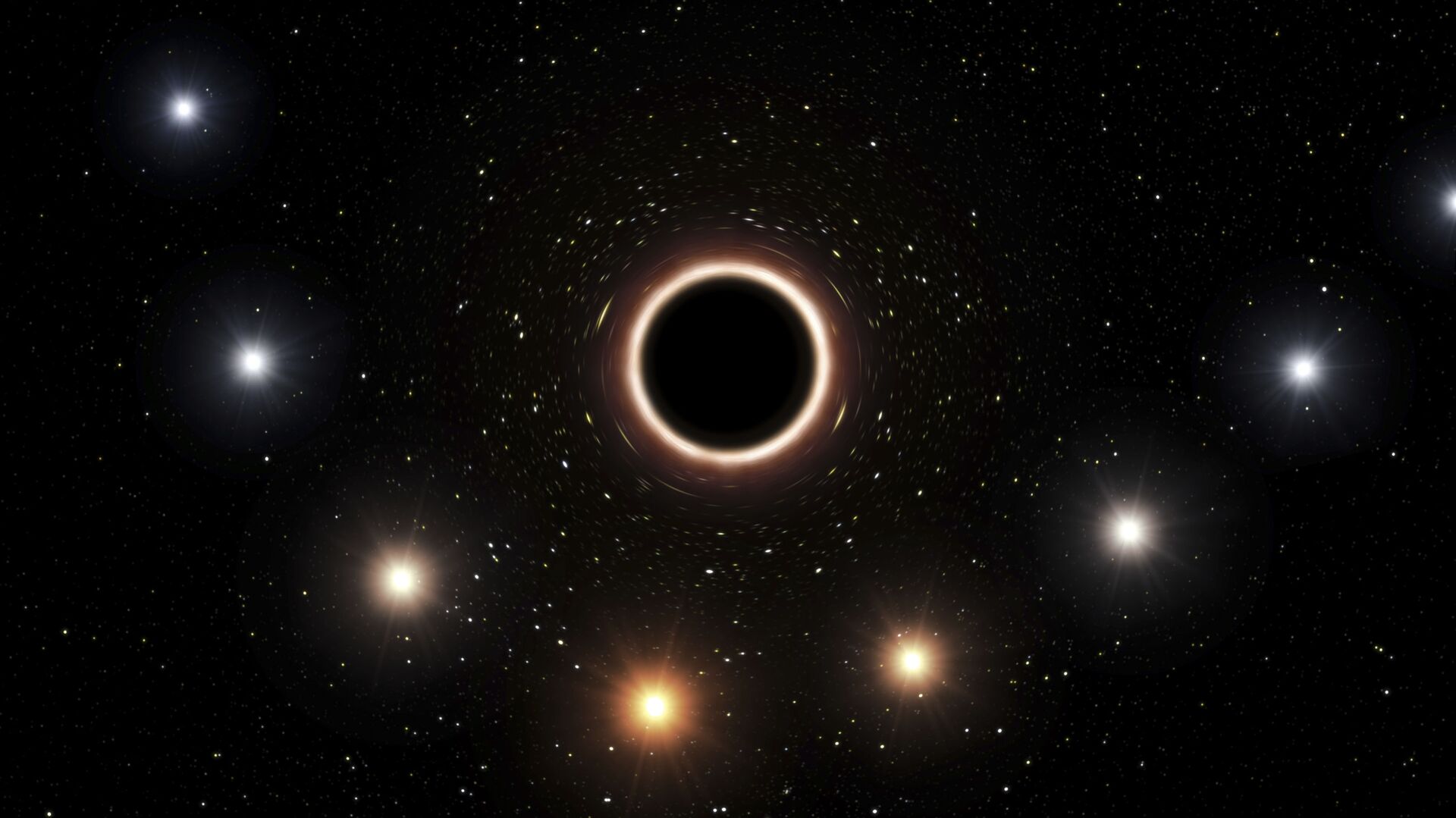https://sputnikglobe.com/20221116/scholars-create-black-hole-and-find-signs-of-hawking-radiation-in-it-1104275968.html
Scholars Create Black Hole... And Find Signs of Hawking Radiation in It
Scholars Create Black Hole... And Find Signs of Hawking Radiation in It
Sputnik International
A group of researchers from the University of Amsterdam created a black hole analog in a lab setting, which can possibly unveil some crucial data about the... 16.11.2022, Sputnik International
2022-11-16T09:16+0000
2022-11-16T09:16+0000
2023-04-21T10:42+0000
science & tech
black hole
https://cdn1.img.sputnikglobe.com/img/107899/09/1078990949_0:120:3215:1928_1920x0_80_0_0_980373039d53cb9e211adf1943ba96fc.jpg
According to a study, published in Physical Review Research, a team led by Lotte Mertens created a one-dimensional chain of atoms served as a path for electrons to "hop" from one position to another.This allowed them to simulate the event horizon of a black hole - i.e. the range beyond which events cannot affect an observer, since the immense density of the black hole prevents event light from escaping the boundary.The paper suggests that the scholars were able to track the equivalent of Hawking radiation - an theoretical effect that may have taken place outside a black hole's event horizon because of relativistic quantum effects.The effect of this fake event horizon produced a thermal shift - but only in certain situations, when part of the chain extended beyond the event horizon.While the Hawking radiation is too faint to be properly detected at the current level of science, the study opens up possibilities to prove its properties by creating other black hole analogs in laboratories.
Sputnik International
feedback@sputniknews.com
+74956456601
MIA „Rossiya Segodnya“
2022
Evgeny Mikhaylov
https://cdn1.img.sputnikglobe.com/img/07e4/09/07/1080390164_0:0:1440:1440_100x100_80_0_0_46c187f2ab0908f86849a7d09a7def57.jpg
Evgeny Mikhaylov
https://cdn1.img.sputnikglobe.com/img/07e4/09/07/1080390164_0:0:1440:1440_100x100_80_0_0_46c187f2ab0908f86849a7d09a7def57.jpg
News
en_EN
Sputnik International
feedback@sputniknews.com
+74956456601
MIA „Rossiya Segodnya“
Sputnik International
feedback@sputniknews.com
+74956456601
MIA „Rossiya Segodnya“
Evgeny Mikhaylov
https://cdn1.img.sputnikglobe.com/img/07e4/09/07/1080390164_0:0:1440:1440_100x100_80_0_0_46c187f2ab0908f86849a7d09a7def57.jpg
black hole, event horizon, hawking radiation, scientists created black hole in a lab
black hole, event horizon, hawking radiation, scientists created black hole in a lab
Scholars Create Black Hole... And Find Signs of Hawking Radiation in It
09:16 GMT 16.11.2022 (Updated: 10:42 GMT 21.04.2023) A group of researchers from the University of Amsterdam created a black hole analog in a lab setting, which can possibly unveil some crucial data about the elusive radiation theoretically emitted by real black holes.
According to a study, published in
Physical Review Research, a team led by Lotte Mertens created a one-dimensional chain of atoms served as a path for electrons to "hop" from one position to another.
This allowed them to simulate the event horizon of a black hole - i.e. the range beyond which events cannot affect an observer, since the immense density of the black hole prevents event light from escaping the boundary.
The paper suggests that the scholars were able to track the equivalent of Hawking radiation - an theoretical effect that may have taken place outside a black hole's event horizon because of relativistic quantum effects.
The effect of this fake event horizon produced a thermal shift - but only in certain situations, when part of the chain extended beyond the event horizon.
"This can open a venue for exploring fundamental quantum-mechanical aspects alongside gravity and curved spacetimes in various condensed matter settings," the study says.
While the Hawking radiation is too faint to be properly detected at the current level of science, the study opens up possibilities to prove its properties by creating other black hole analogs in laboratories.


